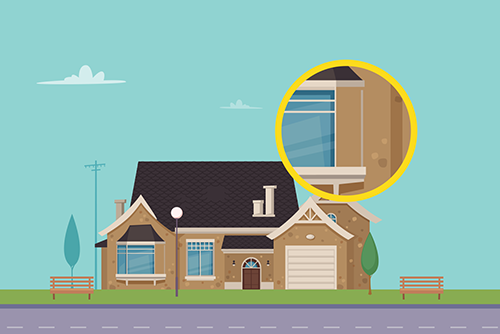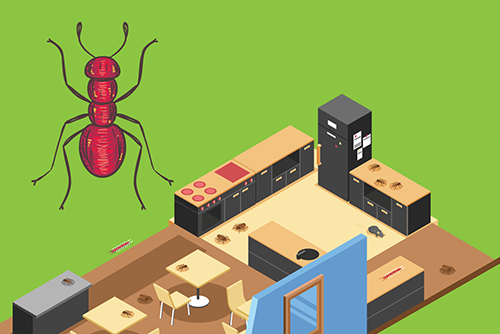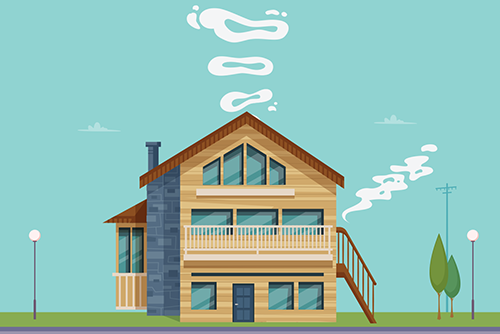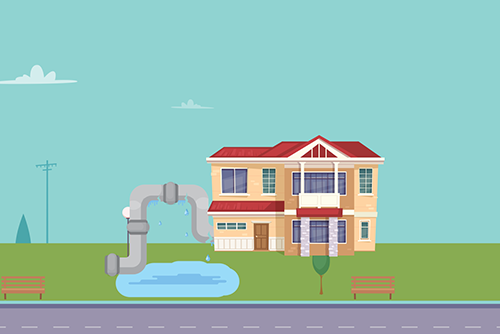

1) POTENTIAL FOUNDATION OR STRUCTURAL PROBLEMS
Large cracks in the foundation, crooked door frames & hard to close doors could be a sign that there’s a structural problem with the foundation.
The best way to determine whether there is a damage is to hire a structural engineer to conduct an inspection.

2) INSECT AND / OR PEST PROBLEM
The most common pests include termites, powder post
beetles & carpenter ants.
A pest inspector is a fairly inexpensive & absolutely worth it, since a pest problem can cost a significant amount of money to correct.

3) RANDOM FRESH PAINT
Many realtors suggest painting an entire room to freshen up the look of the home, although a room's one small section of paint should be a red flag.
It’s possible the seller is trying to cover up a problem which should be a cause for concern.

4) AMATEUR WORKMANSHIP& REPAIRS
It’s common for flipped properties to have repairs that are completed by “flippers” who don’t have the qualification to complete the projects property.
Some of the most common amateur workmanship jobs to keep an eye out for include: plumbing, carpentry & electrical work.

5) ODORS: BOTH GOOD & BAD
Both good & bad odors can be a bad sign. If a home has a plug in air freshener in every outlet or the windows open in the middle of winter. It’s possible the home owner is attempting to cover up a foul odor.

6) POOR OVERALL NEIGHBORHOOD CONDITION
Buyer should keep an eye out for boarded up or vacant properties in the neighborhood.
Problems or crime in a neighborhood can cause problems in the future, even if it’s not the immediate future.

7) STAINS ON WALLS AND /OR CEILINGS
If the seller does not cover up the stains on the wall or ceiling, it should still be seen as a red flag.
It’s important to find out what caused the stain, as it could cause thousands of dollars in repairs in the future.

8) ELECTRICAL SYSTEM ISSUES
Although most home buyers are not professional electricians, simply turning on light switches, checking for flickering lights & checking outlets are good ways to tell if the electrical is working property.
The most common inspection findings are issues with electrical grounding, double tapping in panels, and improper wiring from a remodel throughout a home.

9) POOR DRAINAGE OR GRADING
An obvious sign of poor drainage is pooling water. If the yard has mini lakes, it’s likely to have poor drainage, which could lead to water problem inside the home.
Other signs are overflowing gutter, migrating mulch in flower beds, water stains on basement walls and cracking in the foundation. Overall grading should be sloping away from the home’s foundation.

10) ADEQUATE SECURITY FEATURES
More than a purchased security system, an inspector will look for the basic safety features that will protect your home such as proper locks on windows and patio doors, dead bolts on the doors, smoke and even carbon monoxide detectors in every bedroom and on every level.

FINAL THOUGHTS
It’s critical that whether you are a first time or experienced home buyer, you are always on the lookout for these red flags.
Although many of these may not be visible when viewing a home, many of these red flags can be found during a home inspection, which is another reason to have the home inspected before you make the purchase.
If you have questions, please contact us:
Typically replies within 24 hours
Contact Us



You agree to receive property info, updates, and other resources via email, phone and/or text message. Your wireless carrier may impose charges for messages received. You may withdraw consent anytime. We take your privacy seriously.




